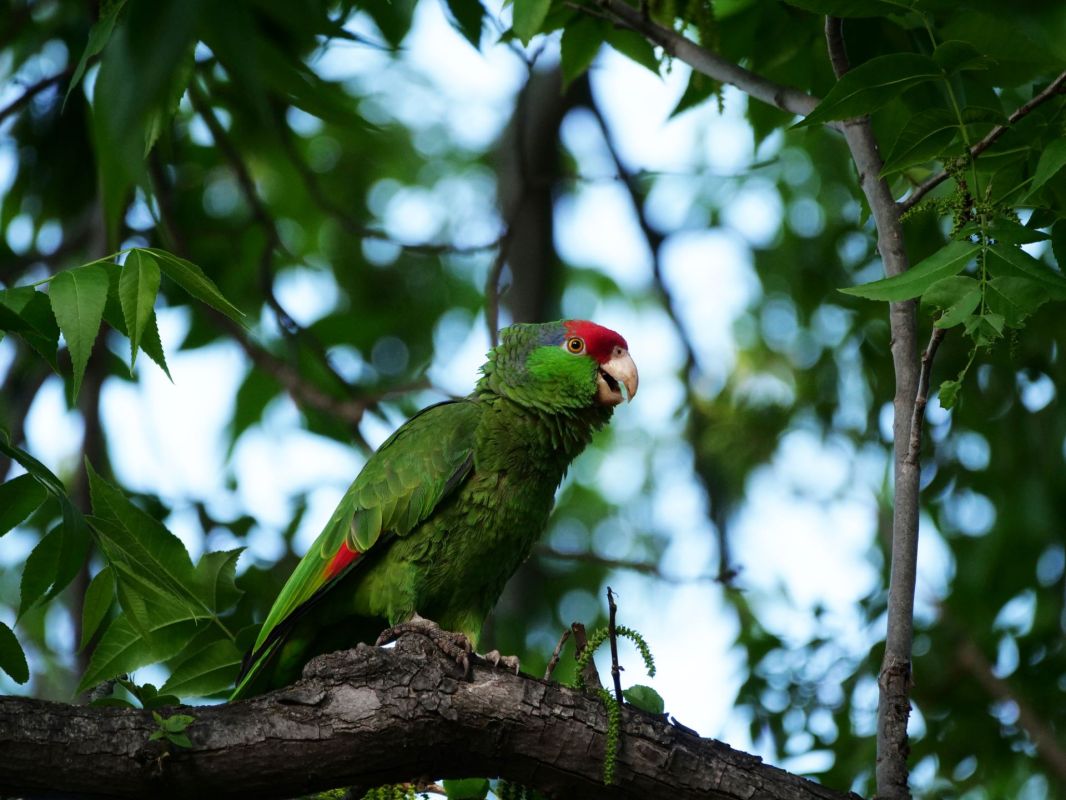Researchers have found a thriving population of an endangered species of Mexican parrot — in urban Texas, Chron reported.
The red-crowned parrot is a bright green bird with a small red spot on its face and head. As Chron explained, this species is native to a small area in northeastern Mexico, and less than 2,000 individuals are alive in the wild.
Deforestation — the destruction of old-growth forests to harvest lumber or make room for activities like farming, like what's plaguing the Amazon — has destroyed much of the parrots' natural habitat.
But they have been shockingly well in the city, Chron said. "Some of them certainly flew across the border, but many were brought over during the 1980s when it was still legal to buy and sell them," Dr. Donald J. Brightsmith, an associate professor of Ecosystem Health at Texas A&M, told Chron.
Even after it became illegal, the trade continued, with poachers stealing eggs and chicks to sell for hundreds of dollars apiece. "Unfortunately, most people, even law enforcement officers, don't realize that these parrots are protected," said grad student Simon Kiacz, who led the research team with Brightsmith.
Brightsmith and Kiacz revealed in their study that they found around 900 red-crowned parrots in the Rio Grande Valley, mostly in Brownsville, Harlingen, Weslaco, and McAllen. Some lived in holes created by woodpeckers in dead palm trees; others chose holes on the sides of buildings.
"Humans have basically created the perfect environment for these parrots," Kiacz told Chron. "They want what we want — ornamental plants with fruit and seeds that are well watered and look attractive all year-round."
In fact, red-crowned parrots fit so well in the Rio Grande Valley environment that in 2019, the Texas Parks and Wildlife Department declared the birds a native species, Chron said. That gives the birds greater legal protection than nonnative species, even endangered ones.
Kiacz hoped Texans would spread the word about these beautiful neighbors and make the area even more welcoming for their small and fragile population.
"For example, maybe you have a dead tree in your yard that doesn't look very pretty, but it's not a danger to you or your home," he said. "Consider keeping it so these parrots can nest there. That's the best way to be a good neighbor to these birds."
Join our free newsletter for cool news and cool tips that make it easy to help yourself while helping the planet.









